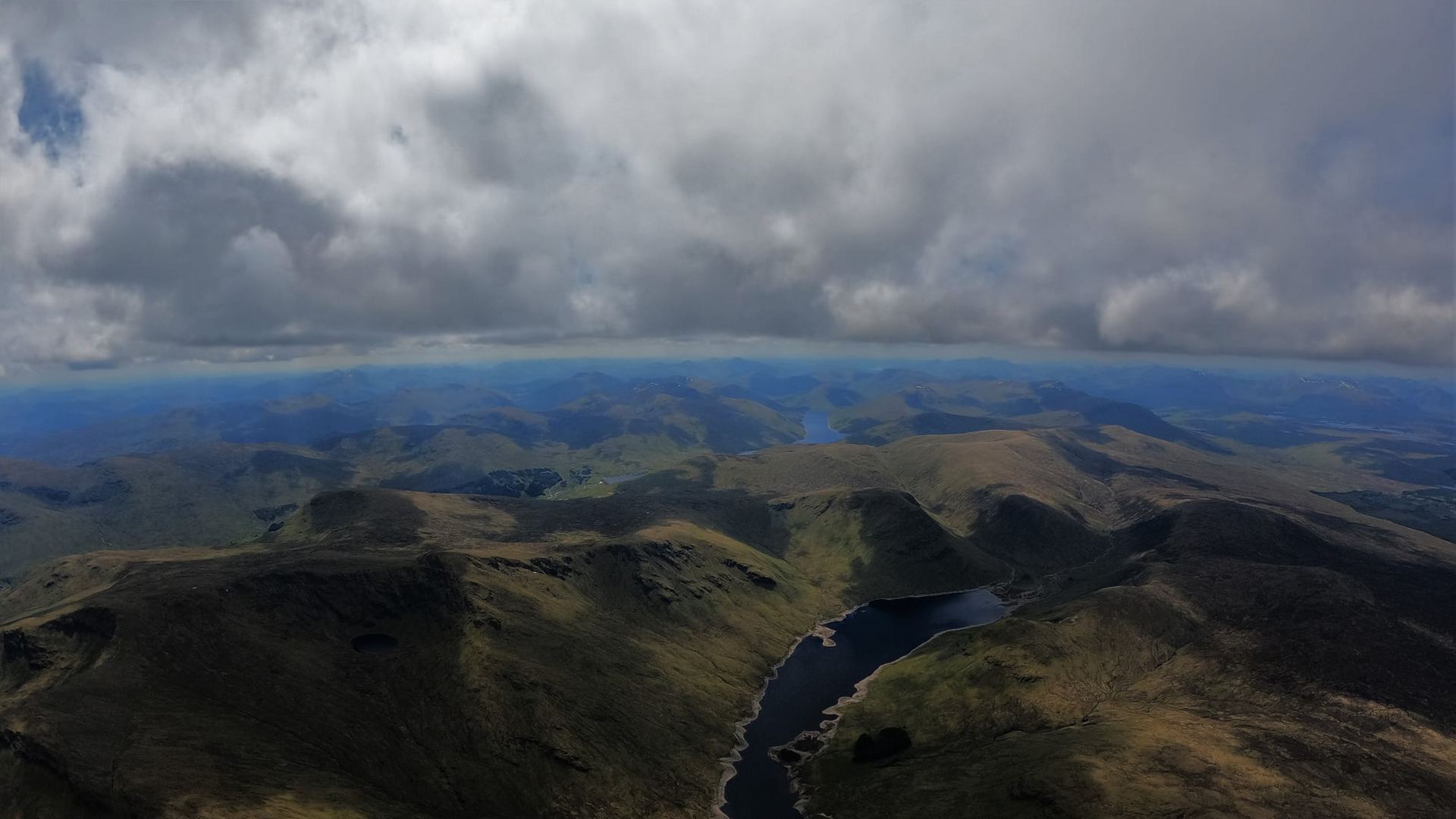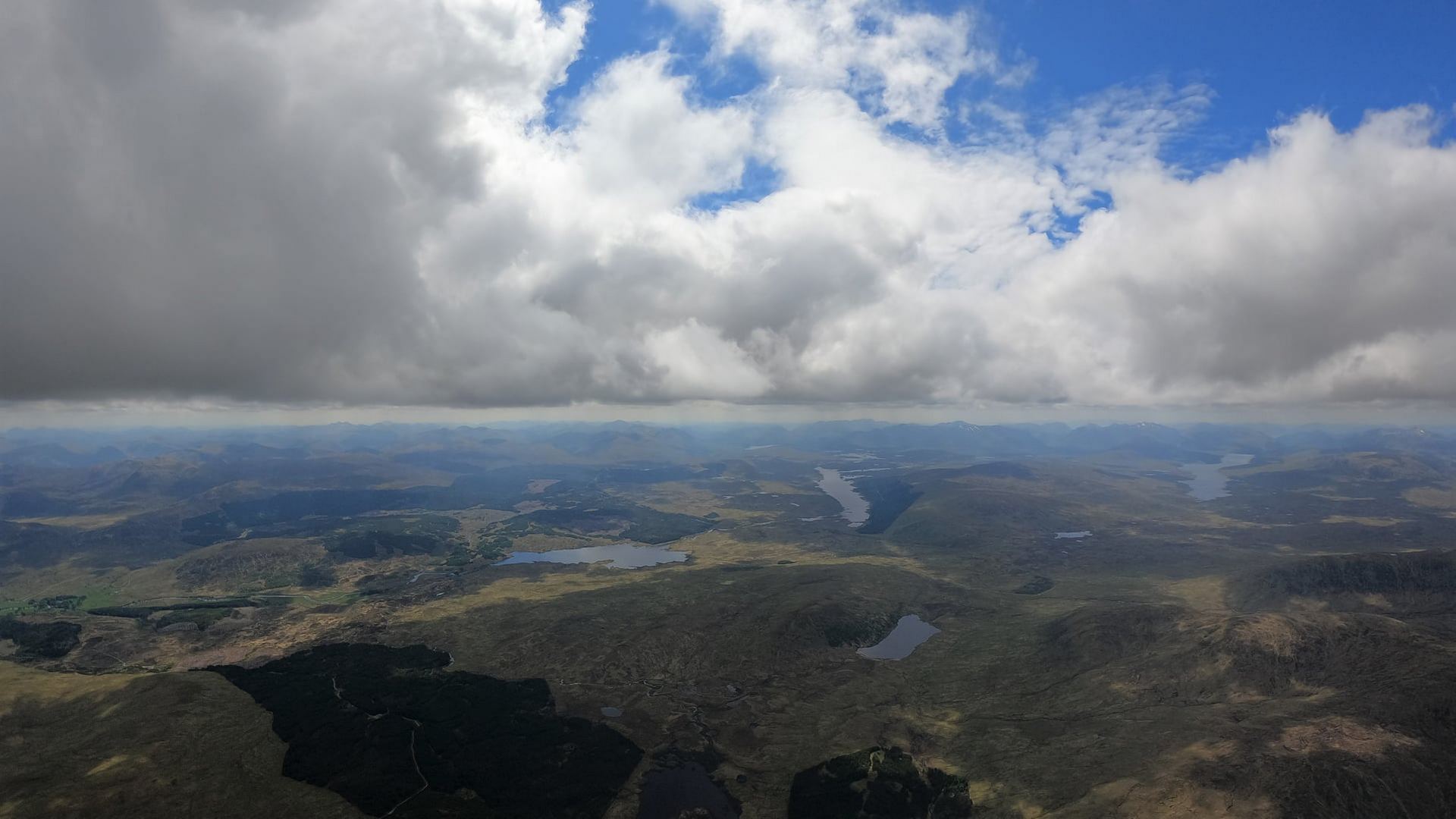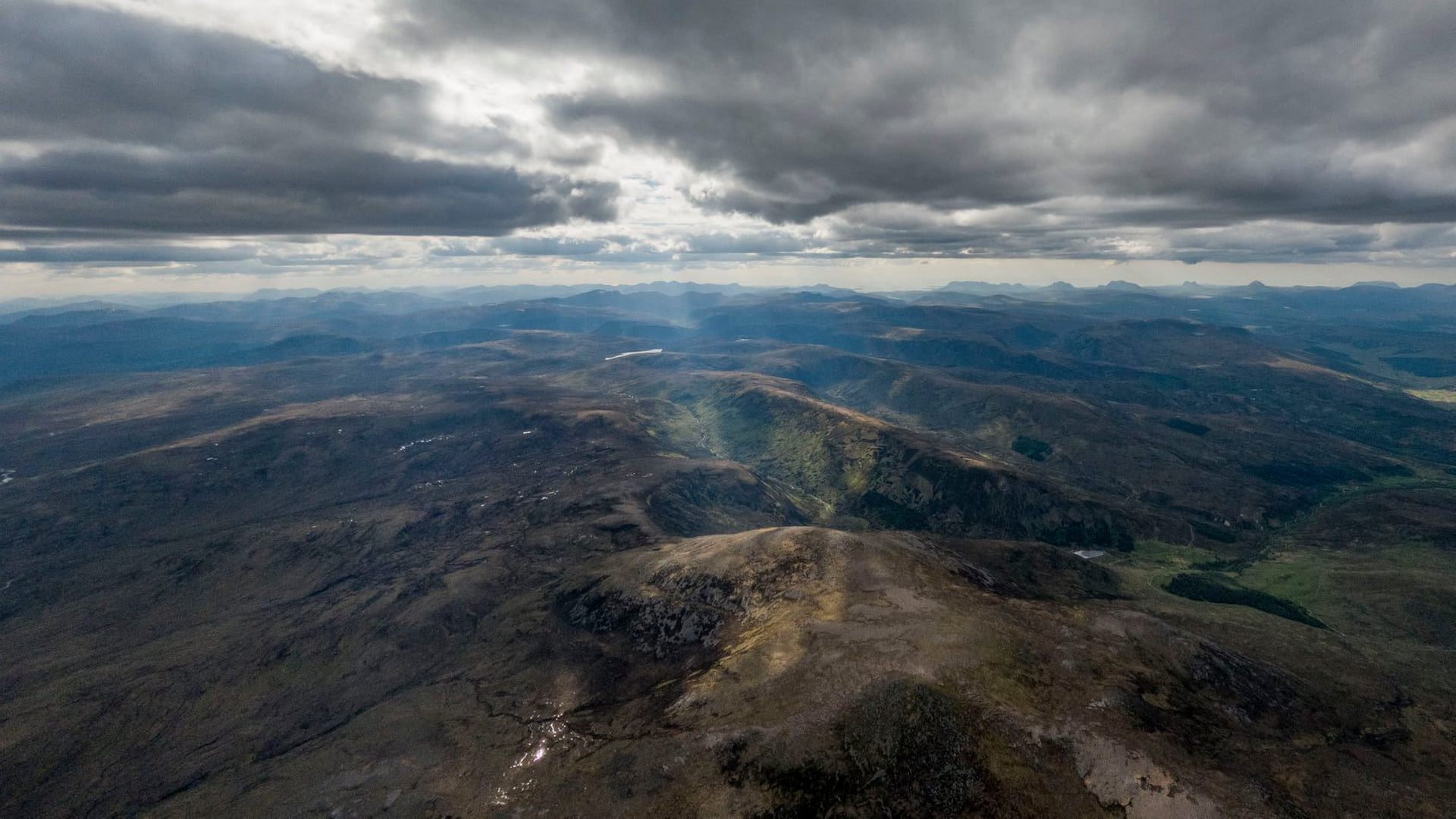
Veteran paraglider pilot and cross country (XC) aficionado Triantafyllos Gkikopoulos — known to his friends as Trias — recounts an exceptionally fine flight on 7th June 2021. It began from Craigmore hill above the village of Aberfoyle near Stirling, and turned out to be a new Scottish paragliding distance record. Trias begins his tale as he continues, with frank honesty.
I'm not going to lie, I don't recall what the forecast was like, but since I did venture over to Aberfoyle, it was probably good. A couple of months earlier I'd flown 200km from the site, but such was my excitement when I reached my goal that I opted for a scenic landing in the intertidal area (the tide was out!), instead of getting the goal which would have given me another 50 XC league points. No more fancy stuff, I thought; I set the same goal, and this time I would get it.
It's funny, but classic days, at least up here in Scotland, don't really look very classic. Usually there's some humidity and a good dose of cloud cover, so if you're looking for big flights in skies like those of Ceara in Brazil, you picked the wrong spot. But I digress.
We take off with Bob Gair and get a climb. It's not very strong and we go back to take off to find the next one. I leave Bob to milk it and stay lower under the white room. I prefer to see where I'm going, myself — most of the time.
 ^ Glen Lyon, looking west.
^ Glen Lyon, looking west.At this point, my plan is to head north-east with the wind. However, Bob demonstrates that the line slightly across due north works better. I'm not particularly high myself, and although I'm committed 5 km along my downwind line, I'm forced at least for the next step to fly cross-wind as well.
It sounds a bit mad, but sometimes even in a southerly, south-westerly or south-easterly, if there's sufficient wind the thermals can be often on the leeside, which on a day like this would put them on north aspects of the hills, but it's true.
I arrive at a 2,000 ft ridge that's perfectly into wind and I find nothing. But I believe that on certain days, if you're going to make the best of them, you have to go big or go home. So I don't sit about to wait for a cycle, I just push on, be that high, be that low or most often be that in the lee. Sure enough I get a top-up but I'm not high. We took off at 11:45, which was probably a bit early, but at the right time as well, if we were going to make the most of the day.
At this point I've not been above 3,800 ft, and I find myself in the leeside at 1,900. I find a drifting zero and stick to it. It's this or nothing, but there's good drift; I can't complain, though I'd like to.
 ^ Corrour looking south-east at Loch Ericht and Loch Rannoch.
^ Corrour looking south-east at Loch Ericht and Loch Rannoch.From this point things get a bit easier — I find a couple of decent climbs as I push slightly across due north. I've inadvertently been forced to fly slightly crosswind, and as I re-evaluate my options looking at cloud base in the far north-east approximately 160 km downwind (which doesn't look great), I set a new plan, to carry on flying due north to maximize distance towards the northern Highlands. I should say at this point that we started in the south-west Highlands, pretty much as south as you can get.
The next 20 km are boonies land, and I get to fly a long glide over the east of Rannoch Moor (this is the place to land if you've had enough of this life — legend has it that there's a hang glider and perhaps even the pilot somewhere on this moor).
 ^ On a certain days you have to go big or go home.
^ On a certain days you have to go big or go home.Once I've passed Rannoch station and the only road around, I get to fly another 20 km over boonies, the Corrour area. The long glide now takes me to a well known massif, Creag Meagaidh, or as I call it Mega Death.
The wind is a bit more from the west here, and at 4,000 ft it's about 30-35 km/h. I get a climb, nothing spectacular, but as I'm in a rush and it drifts, I stick with it. I don't have a lot of clearance over the peak, but some sun has come through and I think what the heck — the leeside corries (I crossed a couple) should be blooming pumping.
Hmm, that isn't exactly the case. As I cross the first corrie I hit the sink of all times. I look around as I keep sinking and, entering into the biggest leeside corrie, I don't think I should be here. “Is this bad?” I think. “Yes it is,” I confirm to myself. I then hit something that feels like a sharp bubble that takes me from -4 m/s to 2.3 m/s in about a second. I turn in it, and then it dumps me into what feels like a parachutal stall at -4 m/s.
For the whole second where I contemplate my options (hands up) I hit the second bubble, same story. On second thoughts I was probably just trying to fly a vortex. Hey, gulls do it — why not us?
 ^ Might be a wee walk out if you land here... Think up!
^ Might be a wee walk out if you land here... Think up!I'm glad that it got better after the second one. I'm cautious not to demand much movement from the glider and I keep sinking in the lee towards the windward ridge, using weight shift to steer. I've found nothing, but I have 300 ft clearance for the second ridge, so I ain't sticking about, I keep diving now for the second lee of the main massif.
As I hug the hill flying over the back, I spot two walkers and consider shouting a hello and a wave, but I know I am temporarily soft and in shock from the recent troubles. That ain't me, so I keep flying.
Ahead of me is a large flat glen. There's bound to be a decent strong leeside here. Unfortunately it's all a bit broken, I do my best to turn into the bubbles as they come up, and the choice ahead is what do I do with the forest and the powerline. I reckon I'll either climb or have to land between the two of them.
I get a climb and I push on. It's a bit tricky as I'm gaining the plateau of the Monadhliath mountains, but I'm rewarded in the lee of the plateau by a decent climb that has me crossing the Great Glen.
 ^ Crossing Loch Ness, looking south-west towards Fort August and, in the far distance, Fort William.
^ Crossing Loch Ness, looking south-west towards Fort August and, in the far distance, Fort William.I get some decent height. The ground is lower and a bit flat, so I get to relax a bit and enjoy the views of Inverness and Dingwall.
 ^ Crossing Loch Ness, looking north-east towards Inverness.
^ Crossing Loch Ness, looking north-east towards Inverness.As I'm now approaching the north-west Highlands I try to think where that sea breeze convergence is going to be.
 ^ The north-west Highlands.
^ The north-west Highlands.I've been flying slightly crosswind in a south-westerly wind; it's good to be nearer the north-east coast, I think.
The sky looks considerably overdeveloped to the north and north-west, and I see the influence of sea breeze in the west.
 ^ The north-west Highlands and west coast.
^ The north-west Highlands and west coast.This can't be right. Surely this black extensive sky to my west is not the good part of the sky?
Sure enough, I land closer to the east coast in an easterly breeze.
Oops! Oh well, north coast another time.
A fine day indeed, with lovely views and feisty leesides!
Good flight, if I say so myself. 😎
Couldn't have done this without the trusted Leopard. The efficiency and agility of the glider gives you the confidence that if there's lift around you can use it. It's very well behaved in moving air and glides well on bar. At any time I know exactly what's happening and what the glider wants. This is extremely helpful when conditions get rowdy. A truly amazing wing!
A big shout out to Warwick Lister-Kaye for his legendary help with retrieval and hospitality. I got to stay in one of Warwick's cabins overseeing the River Beauly in the Scottish Highlands. Lovely location and a great place to stay, about 15 km west of the city of Inverness.
 ^ Looking at the north-west Highlands and west coast. Sea breeze influence can be seen in the clouds in the distance.
^ Looking at the north-west Highlands and west coast. Sea breeze influence can be seen in the clouds in the distance.After 6.5 hours in the air, Trias landed near Lairg in Sutherland, breaking his own Scottish paragliding open-distance record with a 211km flight! Now he just needed to get back to his car in Aberfoyle, 200 miles (320 km) and 4-5 hours away by road.
Text and images by Triantafyllos Gkikopoulos. The flight also, of course! 😉
Flying in Scotland?
It doesn't suffer from crowded flying sites, as do many sites in England, and Trias encourages paraglider pilots to venture across the border when the weather forecasts look good: "It's not that far a drive to hop up here for a day's worth of XC. The natives are well friendly, apart from the midges of course."
Visit the website of the Scottish Hang-Gliding and Paragliding Federation (SHPF).
